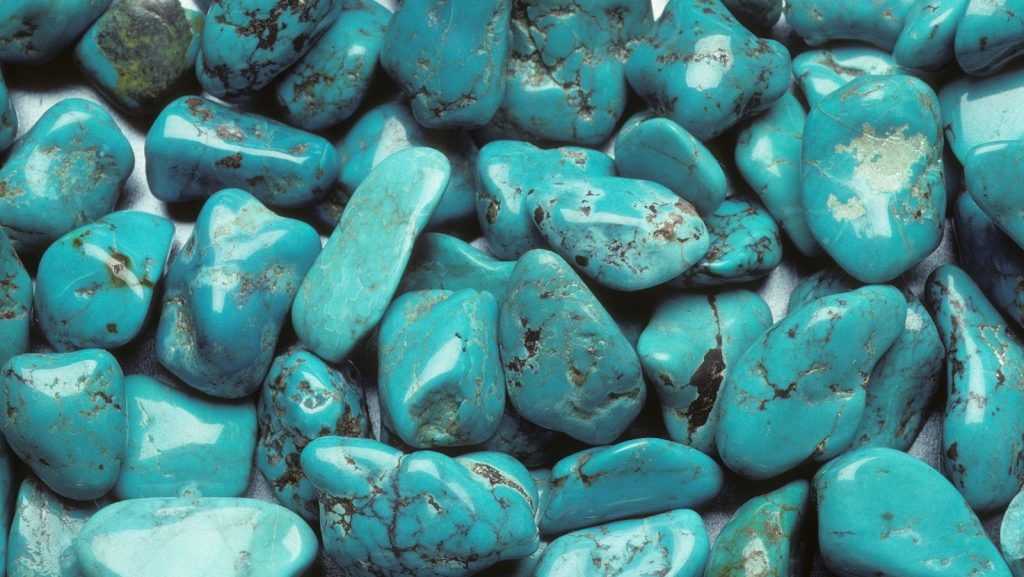
The Rarity and Value of Turquoise Gemstones
Introduction

Turquoise, a captivating gemstone renowned for its striking blue-green hue, has captured the fascination of civilizations throughout history. Its alluring color and cultural significance have rendered it a cherished item in jewelry and art. However, one question often arises: Why is turquoise so expensive? To understand the reasons behind the high value of turquoise gemstones, such as fake van cleef 5 motifs bracelet turquoise, it is essential to delve into the geological, cultural, and market factors that contribute to their rarity and desirability.
Geological Formation and Rarity
Turquoise is a hydrous phosphate mineral that forms through a complex interplay of geological processes. Typically, turquoise is created through the reaction of circulating water containing copper and aluminum minerals with porous rock formations, such as those found in arid regions. This intricate process takes place over millions of years, during which the turquoise deposits develop and solidify within the host rock. Such geological conditions are relatively rare, leading to limited occurrences of high-quality turquoise deposits around the world.
The scarcity of favorable geological environments is a pivotal factor contributing to the high price of turquoise. As only a handful of locations worldwide are capable of producing gem-quality turquoise, the supply remains limited. Consequently, this scarcity drives up the price as demand outpaces availability.
Color and Quality
One of the primary factors influencing the value of turquoise is its color. The most prized turquoise exhibits a vibrant blue-to-green spectrum often referred to as “Robin’s egg blue.” This hue is attributed to the presence of copper in the mineral composition. The color saturation, tone, and uniformity of the gemstone significantly affect its desirability and, consequently, its price.
Turquoise’s value is also influenced by its quality and the absence of impurities. High-quality turquoise is free from cracks, pits, and other imperfections that can diminish its visual appeal and durability. The level of the matrix, or the host rock within which the turquoise is found, also plays a role in determining its value. Gemstones with a minimal amount of matrix are often preferred, as they showcase the turquoise’s color and texture more prominently.
Cultural Significance and Historical Context

Throughout history, turquoise has held immense cultural and spiritual significance for numerous civilizations, including the Ancient Egyptians, Persians, Native Americans, and Chinese. Also mentioned Cartier open love bracelet with 1 diamond replica The stone was often associated with protection, healing, and divine connection. This cultural reverence has perpetuated turquoise’s desirability and maintained its demand over the centuries.
Due to their historical and cultural importance, turquoise gemstones that have been mined from historically significant locations or have connections to renowned cultures tend to command higher prices. Collectors and enthusiasts place a premium on gemstones with a rich cultural heritage, as they encapsulate a piece of history and tradition.
Market Demand and Trends
The value of turquoise is closely tied to market demand and trends within the jewelry and fashion industries. Turquoise’s popularity may fluctuate over time based on changing consumer preferences and design trends. When influential designers incorporate turquoise into their collections or when celebrities don turquoise jewelry, it can spark renewed interest in the gemstone, thereby affecting its market value.
Furthermore, the scarcity of high-quality turquoise amplifies its allure, driving demand among collectors and connoisseurs. The gem’s appeal is not only aesthetic but also emotional, as owning a rare and exceptional turquoise piece offers a sense of exclusivity and luxury.
Conclusion
In conclusion, the high value of turquoise gemstones can be attributed to a multifaceted interplay of geological rarity, color and quality, cultural significance, and market dynamics. The intricate geological processes required for turquoise formation, combined with its revered color and historical importance, create a limited supply of desirable specimens. The cyclical nature of market demand, driven by fashion trends and cultural connections, further amplifies the gemstone’s value. For those captivated by its beauty and intrigued by its history, turquoise remains a cherished and sought-after gem, embodying the essence of rarity and cultural significance.


